-
 If You are Planning a Trip to Pondicherry in 2020, These are the Places to Visit for Foodies, Beach Bums and Shopaholics!
If You are Planning a Trip to Pondicherry in 2020, These are the Places to Visit for Foodies, Beach Bums and Shopaholics!
-
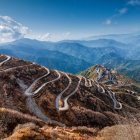 Take a Cool Break This Summer as BP-Guide Brings You the 10 Coolest and Most Mesmerizing Places to Visit in India in the Summers (2019)
Take a Cool Break This Summer as BP-Guide Brings You the 10 Coolest and Most Mesmerizing Places to Visit in India in the Summers (2019)
-
 10 Best Restaurants in Bandra: from Fine Dining to Hipster Cafes and Budget Eats, These are the Places You Absolutely Need to Eat At in 2019!
10 Best Restaurants in Bandra: from Fine Dining to Hipster Cafes and Budget Eats, These are the Places You Absolutely Need to Eat At in 2019!
Tips on How to Make the Most of Your Visit in Lucknow
Best Time to Visit Lucknow
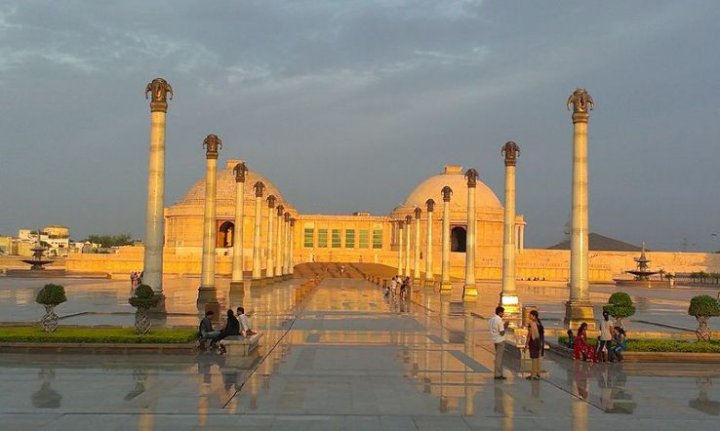
The land of exquisite etiquette, rousing religious movements and Chikankari, Lucknow is an ancient city located on the banks of River Gomti. Capital to the city of Uttar Pradesh, Lucknow is a bustling city renowned for its Nawabi subtlety and lip smacking cuisine, which speaks volumes about its incredible blend of the ancient and the modern eras. Home to several awe-inspiring historic sites that speak of its primeval, royal and oriental architecture, the best time to visit Lucknow is November through March.
Summertime being typically hot and dry, May through July aren’t really ideal for travel to this part of the country, with the average high temperature being nearly 45°C. March and April are relatively comfortable for travelling to Lucknow. Winters are usually pleasant and sunny, while the nights end up being cold and misty. With an average temperature of 7°C-24°C, you’d enjoy the city the most during this time. Monsoon too is a pleasant time to explore Lucknow, when there’s moderate rainfall and temperature oscillates between 25°C-35°C.
Things to Do in Culturally Rich Lucknow
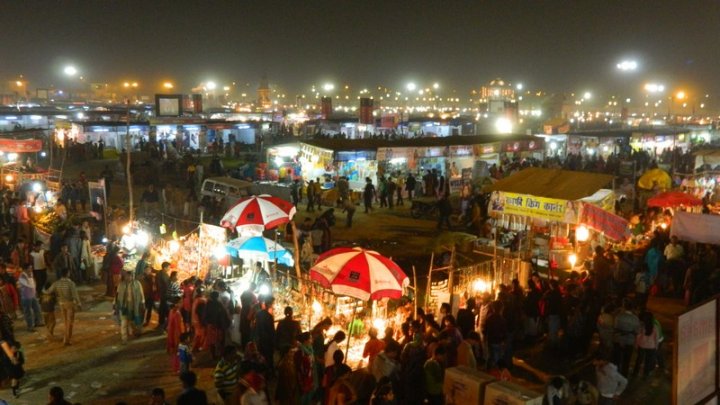
Lucknow is one of the major cultural hubs in the country and the Constantinople of India. Having established a significant place in the cultural realm on a global platform, Lucknow is popular for its landmark mannerisms, music, and dance, poetry, in addition to its royal architecture, gorgeous garden, old markets and delectable food. With a number of fascinating galleries, historical sites and parklands to visit, there are different activities you and your family can explore and indulge in when visiting this beautiful city of Nawabs. Owing to its rich heritage, there are several museums that serve the city’s historic past, for instance, the Hussainabad Picture Gallery, which houses some of the rare portraits of the Nawabs. The Gandhi Museum has on display his personal belongings that include his clothes, slippers, walking stick and photographs, while the Lucknow State Museum is renowned for an Egyptian Mummy and its sarcophagus.
The historic of Lucknow spans beyond the walls of its architectural marvels and has many more shades that can only be comprehended and appreciated in the streets and Chowk by lanes. With a walking tour, uncover the unexplored and become familiar with the enigmatic part of the city’s heritage. Then, there’s the Victorian Walk that gives you a glimpse into the city’s rich history, legacy and the marketplace which has evolved in time to service the elite of Lucknow. From seated tea sessions to rediscovering the Hazratganj of Yore, you will be amazed by how this marketplace has been playing a significant role in the lives of its citizens and why it’s so loved!
One of the oldest and most popular parks in Lucknow and a lovely place to spend an entire day at with your kids is the Gautam Buddha Park is perfect for a hot summer evening to enjoy pedal boat rides or a picnic with the entire family. There are other amusement or water parks that are good for family activities, fun and games with plenty of rides, music & dance and food to enjoy!
Places to Eat in Lucknow

With a distinct identity of its own, Lucknow’s cuisine is a foodies’ heaven. From kebabs to biryani to paan, the best way of exploring its food is to wander the narrow alleys, for you never know which one would lead you to paradise! Albeit, the list of Lucknawi delicacies is infinite, some of its most popular dishes include the nahari kulchas, kormas, sheermal, galouti kebabs, boti kebab, tunday kebab, biryani, rogan josh, tokri chaat, paya ki nihari, and malai gilori. All these lip-smacking dishes are known not only for their flavours but also the way they’ve been cooked and are presented.
The best places to visit gorge on city best are JJ Bakers on Hazratganj which is popular for its coconut cookies, while you’ll get the best biryanis at Idris (Chowk), Dastarkhwaan (Gomti Nagar), Wahid at Aminabad (Chowk). Chaat is drool-worthy at Royal Café (Hazratganj), Raj & Raj (Aashiana Colony), Chappan Bhog (Sadar Bazar), King Chat Corner (Hazratganj) and Ratti Lal (Lalbagh). The best of Lucknow’s Kebabs can be savoured at Tundey Kebabi (c), Shekhawat Kababi (Hazratganj), and Raheem (Chowk). Some other joints that are popular for paan, desserts, lassi and other flavoured drinks include Dayal (Aminabad), Pandit Raja ki Thandai (Chowk), Soda Shikanji (Malhotra SBI Hazratganj) and Shri Corner (Chowk).
Best Places to Visit in Lucknow
Imambara - Chota & Bada
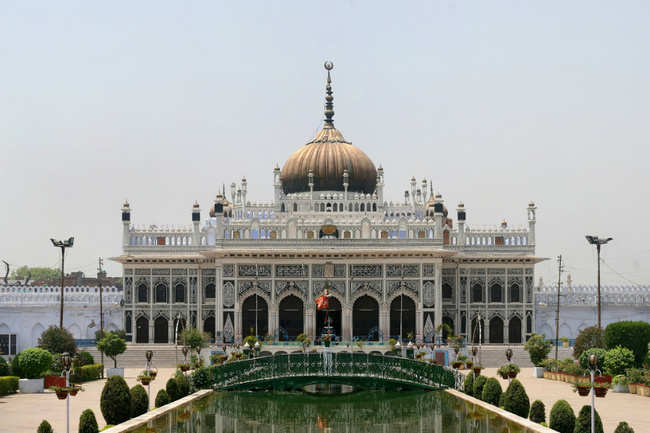
Built by Nawab Asaf-ud-Daula in 1786-91, Bada Imambara is a large structure and one of the most popular architectural marvels from the gone era. With its central halls being the largest domed chambers in the world, there’s no woodwork in the entire structure, except for its galleries in the interior portion. Constructions of this grand building began to post a devastating famine in Awadh, from a perspective of providing employment to its people for nearly a decade through the famine’s effect. The structure has huge underground passages that are now blocked, with a staircase that goes up to a series of mazes known as Bhool-Bhulaiyan, on the outside portion of the structure. The Bada Imambara is open for visitors from Sunrise to Sunset with an entry fee of Rs. 25 for Indian citizens and Rs. 500 for foreign visitors that extend visits to the Chota Imambara, Picture Gallery and Shahi Hamam.
One of the most gorgeous and attractive buildings in the old city of Lucknow, the Imambara of Hussainabad or the Chota Imambara is a daunting monument that stands to the west of the Bada Imambara and is a beauty to behold! A structure that initially functioned as an assembly hall for Shia Muslims, the Imambara was designed to serve as a mausoleum for Muhammad Ali Shah (the 3rd Nawab of Awadh) and his Mother. Endearingly adorned with chandeliers and decorations to celebrate special occasions, especially Muharram, this 19th-century marvel is also known as the Palace of Lights owing to the abundant ornaments that decorate the Chota Imambara. The structure holds a lovely blend of Indo-Islamic, Charbagh and Persian architectural and structural designs with its external walls resplendent with Quranic verses in Islamic Calligraphy and interiors that are adorned and maintained with intricate detailing and best care. The Chota Imambara is open for visitors from 6.00 am-5.00 pm with an entry fee of Rs. 25 for Indians and Rs. 300 for foreigners.
Rumi Darwaza
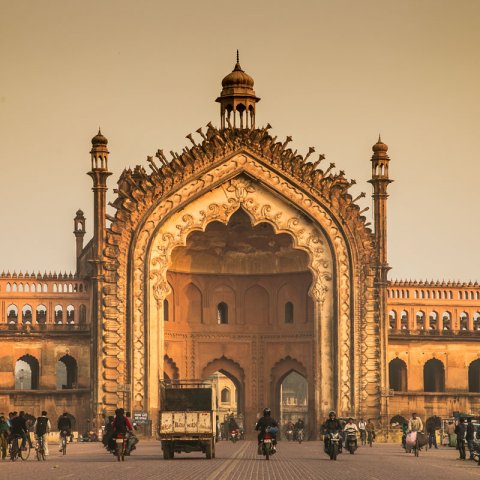
At an astounding height of 60 feet, the Rumi Darwaza is one of the most remarkable structures in the country, since its establishment in 1784 by Nawab Asaf-Ud-Daula. A model of Awadh’s marvellous architecture, the Rumi Darwaza is also popular as Turkish Gateway, for its identical design to a similar entryway in ancient Constantinople. The upper portion of Rumi Darwaza includes an octagonal umbrella that is etched gorgeously and is accessible via a stairway. Atop the Rumi Darwaza is a huge lantern that lights up the structure at night, making it look absolutely beautiful. There are little water jets that gush out from the sides of the arch from tiny carved flower buds, staging the structure to look like a gateway to heaven. Despite its weak and decaying condition, the Rumi Darwaza continues to be a significant landmark from Lucknow’s history that stands tall and proud. The Rumi Darwaza is open to visitors 24X7 without any entry fee.
Ambedkar Memorial Park

A public park and memorial, the Dr. Bhimrao Ambedkar Samajik Parivartan Prateek Sthal or Ambedkar Memorial Park was built across 107 acres and is located in Gomti Nagar, constructed in honour of Dr. Ambedkar and other social reformers like Shahuji Maharaj, Jyotiba Phule, Kanshi Ram, Birsa Munda and Sree Narayana Guru. With a variety of structures that add to the beauty of the park, Ambedkar Memorial Park is one of the most significant landmarks in Lucknow City. Open to visitors throughout the year, the park experiences heavy rainfall, and summers are typically harsh and dry, which makes winters the best time of the year to visit the park. One of the major attractions in the Park is the Ambedkar Stupa at the heart of the park which has 4 entryways and is built like a flower with 4 petals with the statue of Dr. Ambedkar seated facing the dome and an inscription at the base of the flower that says, “My struggle of life is my only message.” The next attraction is the Dr. Bhimrao Ambedkar Samajik Parivartan Sangrahalay which has been set spanning 2.5 acres with two domes atop it, housing large figurines of the social reformists mentioned above and an additional structure that holds 18ft tall marble statues of Kabir Das, Gautam Buddha, Guru Ghasidas, Sant Ravidas and Birsa Munda. Then, there’s the Pratibimb Sthal, which serves as the main entrance to the memorial with 62 statues of elephants on either side, guarding the monument and are quite a crowd puller.
Nawab Wajid Ali Shah Zoological Garden
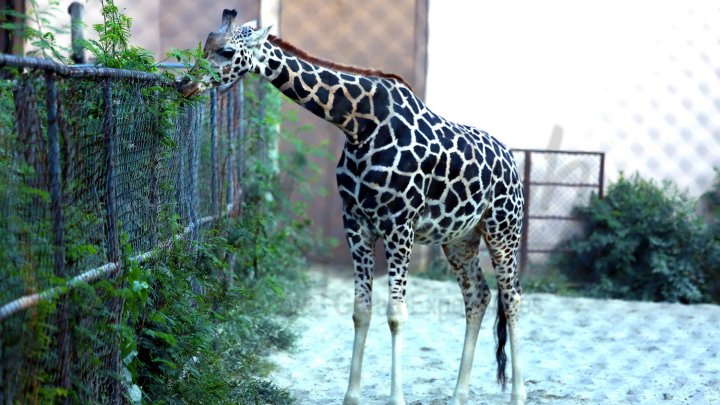
The Nawab Wajid Ali Shah Zoological Garden is perhaps the first zoo in the world to get an auto location detector & audio story on the animals in the zoo. Spanning 71.6 acres in the heart of Lucknow City, the zoo has been categorized as one of the largest zoos. With over 12,00,000 visitors annually, the zoo houses about 298 bird species, 72 reptiles, and 463 mammals, including the Asiatic Lion, Royal Bengal Tiger, White Bengal Tiger, Himalayan Black Bear, Indian Rhinoceros, Gray Wolf, Barking Deer, Giraffe, Asiatic Elephant, European Otters, Giant Squirrels, Golden Pheasant and more. The Nawab Wajid Ali Shah Zoological Garden is also one of the only two zoos to have an orangutan. The zoo is open for visitors from 9 am to 6 pm and the entry fee is Rs. 30 for kids and Rs. 60 for adults.
Janeshwar Mishra Park
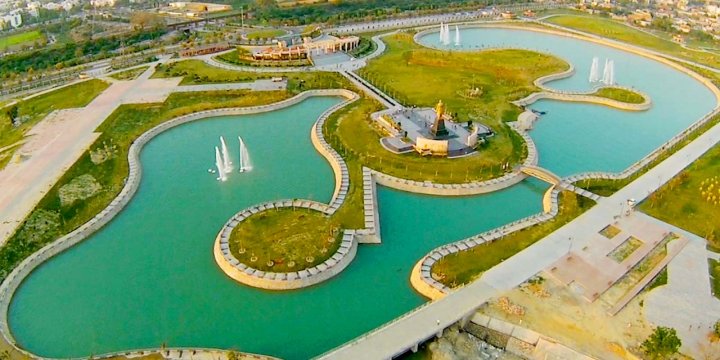
Janeshwar Mishra Park in Gomti Nagar is an urban park that was established in the memory of the late politician Janeshwar Mishra. The park was inaugurated in 2014 with an aim to improve and enhance the ecological balance and restore a habitat sensitive to small animal, birds, amphibians and insects. It is an eco-friendly park that was conceptualized and designed with recreational greenery in a multifunctional environment. Considered the 10th largest park in Asia, the park has lush greenery with a variety of flora and fauna and is looked at as a mini forest. It is open for visitors from 5 am to 8 pm and features a major entertainment & recreational center for the community.
Dilkusha Kothi

A hunting lodge that was later restructured into a summer palace for the Royals, Dilkusha Kothi was built in 1800 by Maj. Gore in an ornate style. A residential colony now that houses government officials, Dilkusha faced the impact of the first war of Independence and was left standing only with a few towers and walls. Just 2kms from Hazratganj, Dilkusha still has thriving gardens with the remaining patterned walls. There’s a Seaton Delaval Hall which has a striking resemblance to the Seaton Delaval Hall in Northumberland, England.
Kaiserbagh Palace Complex
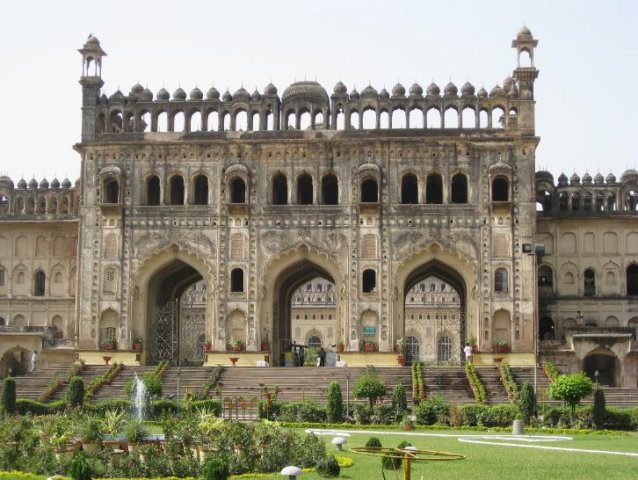
Constructed in 1859 during the reign of Nawab Wajid Ali Shah, the Kaiserbagh Palace complex spans from the Chattar Manzil to the Tarawali Kothi to the north and from Roshan-ud-Daula Kothi to the Chaulakhi Kothi on the south side. With certain sections of the palace demolished by the British forces post the revolt the palace became a refuge for the Nawab’s wife who led the Awadh revolutionaries at the time. The ruins of the palace in parts have a garden that was styled in the Persian Charbagh layout and attracts tourists from all over the country for its fine architecture, which is a product of different styles that are unique in their construction. From a variety of captivating minarets to well-designed pathways, the palace will beckon you to revisit.
The structures on the Kaiserbagh quadrangle once offered lodgings for the ladies in Wajid Ali Shah’s harem, and in the center of the structure stands the White Baradari, a magnificent white stone edifice, that was earlier paved with silver. While the Baradari remains intact, a significant portion of the quadrangle has given way to a bustling market now.
Hazratganj
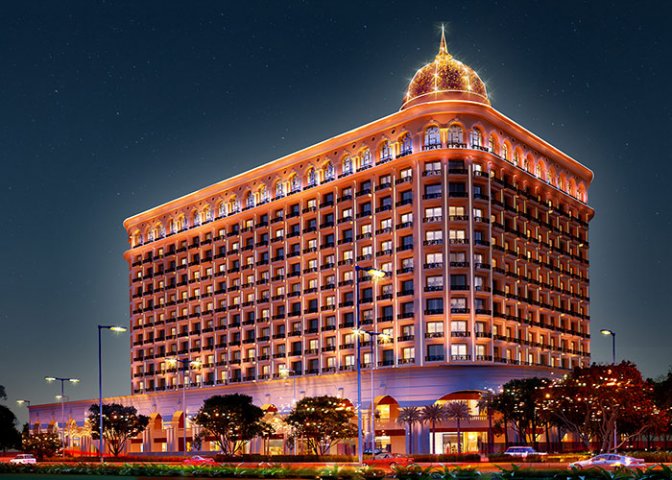
Popularly known as Ganj, Hazratganj landed its name in 1842 and post the first war of Independence in 1857 when the Britishers took over Lucknow, Hazratganj was remodelled in honour of London’s Queen Street. In 2010, nearly 200 years later, Hazratganj went through another restructuring, with the buildings painted uniformly and Victorian style guardrails & stone pavements constructed to uplift the architecture. Hazratganj also takes pride in some Lucknow’s most iconic ancient monuments like the Dilkusha Kothi and the Residency. A hub for various handicrafts and handmade products, Hazratganj is a popular spot for Chikankari shopping escapades as well to visit the Kashmir Government Arts Emporium and the Gandhi Ashram. Hazratganj is also one of the most popular haunts for Lucknawi delicacies.
Nawabganj Bird Sanctuary
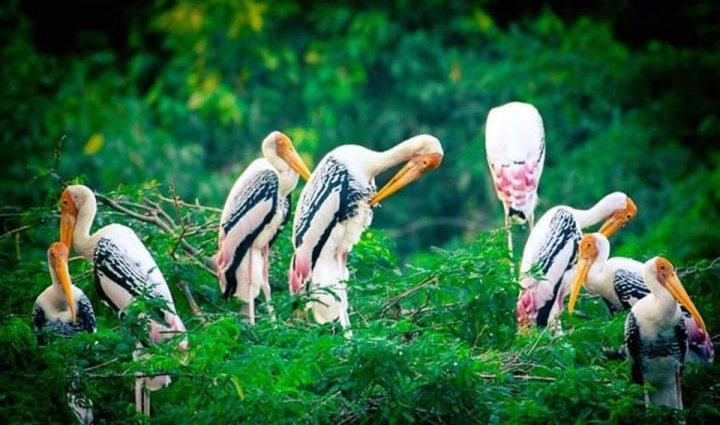
A bird sanctuary in the Unnao District on the Lucknow-Kanpur Highway, the Nawabganj Bird Sanctuary is a popular wildlife national park. With a massive swamp and a shallow lake, the sanctuary is home to a few migratory and resident waterfowls and a perfect spot for viewing the fledglings and excellent photography. There are over 250 ephemeral birds that come in from Russia and include peafowl, lord crow, sarus crane, Indian roller and tern with a variety of water snakes, rat snake, cobra and other varieties of reptiles.
The British Residency
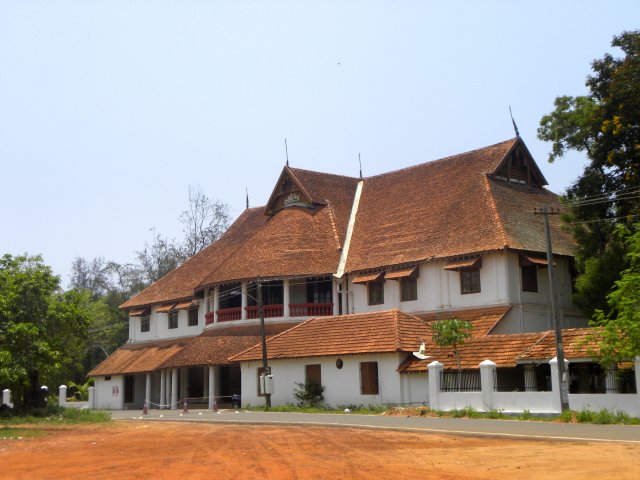
A group of several buildings that are set in a common arcade in Lucknow City, The Residency is also known as the British Residency or the Residency Complex. The Residency served was home to the British Resident General, a representative in the court of Nawab. Built in late 1700, by Nawab Asaf-Ud-Daulah and seen to completion by Nawab Saadat Ali Khan, the Residency Lucknow became a hub for all British personnel soon after. One of the most symbolic events in the history of this building was the 1st war of Independence in 1857, which was triggered by the Indian soldiers employed in the British army and the advent of new ammunition which was coated with beef and pork fat, thereby disturbing the religious sentiments of the soldiers. Much against their wishes and protests, they were forced to use the cartridges which led to a rebellion and brought about destruction to the Residency as well. The structure was razed by a series of bullets and cannons and bears the marks of it till date.
Bonus Tip: Shopping in Lucknow
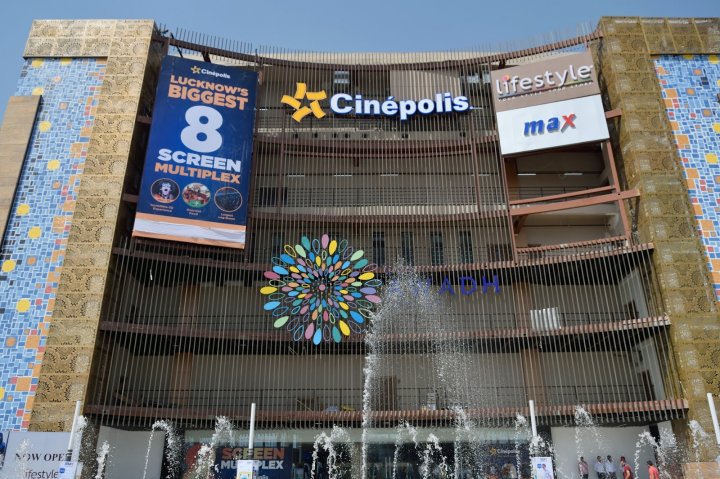
Lucknow is renowned for its architectural marvels, its food and intricate Chikankari Embroidery. The city’s skilled artisans create beautiful thread masterpieces on fabrics like chiffon, silk, net and muslin. Lucknow is also popular for its jewelry and the traditional ittar (perfume). With ample shopping spots in the city, you will have a great time pampering yourself with some retail therapy. Though the city’s short of glitzy and huge malls, shopping is quite an experience still in the city of Nawabs with its vibrant markets and rich crafty traditions.
Some of the best places to shop at in Lucknow are Alambagh, Gadbadjhala, Janpath, Chowk, Nakhas Market and Aminabad, not to forget Hazratganj. All these places offer a variety of things to buy and experience, including apparel, jewelry, books and embroidered items.
- Alambagh Market – is situated on the Lucknow-Kanpur Road and one of the most elite markets in the city with a variety of needle & gold jewelry, fresh vegetables and the usual curious. Spanning a huge area, the market begins from the Teri Pulia Bazar and stretches to Chandar Nagar, spanning Singhar Nagar and Krishna Nagar, making it one of the best shopping places.
- Janpath Market – is one of the most frequented markets in Lucknow with dozens of small shops and a popular haunt for the youngsters. With a wide range of Chikankari Embroidery and Ittar available at reasonable prices, the market’s bargain process is the highlight of shopping here.
- Chowk – is yet another popular spot for shopping in Central Lucknow, situated 3km from the Bada Imambara and is one of the oldest markets in the city with interconnected narrow lanes, small shops with old world charm and a variety of Chikankari clothes, Ittar and Antiques, in addition to gorgeously carved ivory items with bird, leaves and flower motifs.
- Nakhas Market – is a 200-year-old market located in the oldest part of the city and renowned for its zardozi embroidered fabrics, wooden items and jewelry. Divided into several submarkets that include the Nakhas Bazar, Vegetable and Birds markets, it becomes easier for visitors to shop here. The Bird Market is a huge crowd puller for a variety of birds and small animals available for purchase. The Sunday Market is also quite popular with nearly 1200 makeshift shops that sell second-hand goods, daily use items and electric spares. The market is also abundant with local delicacies.
-
 If You are Planning a Trip to Pondicherry in 2020, These are the Places to Visit for Foodies, Beach Bums and Shopaholics!
If You are Planning a Trip to Pondicherry in 2020, These are the Places to Visit for Foodies, Beach Bums and Shopaholics!
-
 10 Best Restaurants in Bandra: from Fine Dining to Hipster Cafes and Budget Eats, These are the Places You Absolutely Need to Eat At in 2019!
10 Best Restaurants in Bandra: from Fine Dining to Hipster Cafes and Budget Eats, These are the Places You Absolutely Need to Eat At in 2019!
-
 Planning to Travel Around India This Monsoon? Here are the Best Places to Visit in August in India (2019)
Planning to Travel Around India This Monsoon? Here are the Best Places to Visit in August in India (2019)
-
 Itching to Travel the World? Here's Our Guide to the Top 10 Best Places to Visit in the World (2019)!
Itching to Travel the World? Here's Our Guide to the Top 10 Best Places to Visit in the World (2019)!
-
 Visiting the Most Beautiful Places on Earth Doesn't Cost You an Arm and a Leg: 10 Amazingly Cheap and Best Places to Visit in the World
Visiting the Most Beautiful Places on Earth Doesn't Cost You an Arm and a Leg: 10 Amazingly Cheap and Best Places to Visit in the World
Eat
The Mughal and Awadhi cuisines, which dominate most of the North Indian food worldwide, originated in Lucknow. When in Lucknow, start your day with the good-old Kachori, accompanied by Makhan Malai, a kind of frothy sweet dish that literally melts in your mouth. Later, try the famous Tunde ke Kebab, so succulent that you will definitely want more! And of course, your trip to Lucknow is incomplete without chaat at the Jain Chaatwala. If there is still room for more, do visit Dastarkhwan for authentic Awadhi biryani!


 Highlight the Best Facets of Your Incomparable Beauty: Discover the Best Face Highlighter Currently Available in India and Everything You Need to Know About Using Face Highlighters for Maximum Effect (2023)
Highlight the Best Facets of Your Incomparable Beauty: Discover the Best Face Highlighter Currently Available in India and Everything You Need to Know About Using Face Highlighters for Maximum Effect (2023)
 Forget the Blemishes and Get that Picture Perfect Flawless Radiance on Your Face: Check out the Best Foundations for Oily Skin Currently Available in India and Everything You Need to Know About Makeup Foundations (2023)
Forget the Blemishes and Get that Picture Perfect Flawless Radiance on Your Face: Check out the Best Foundations for Oily Skin Currently Available in India and Everything You Need to Know About Makeup Foundations (2023)
 Make Your Presence Felt Wherever You Go: Discover the Best Perfumes Under 2000 for Both Men and Women to Announce Your Arrival and Make Any Occasion Memorable (2023)
Make Your Presence Felt Wherever You Go: Discover the Best Perfumes Under 2000 for Both Men and Women to Announce Your Arrival and Make Any Occasion Memorable (2023)
 Protect Your Oily Skin from the Harmful Rays of the Sun: Discover the Best Gel Based Sunscreens for Oily Skin and Everything You Need to Know Before Buying One (2023)
Protect Your Oily Skin from the Harmful Rays of the Sun: Discover the Best Gel Based Sunscreens for Oily Skin and Everything You Need to Know Before Buying One (2023)
 Minor Blemishes and Wrinkles Affecting Your Confidence? Check out the Best BB Creams to Conceal Your Worries and Nourish Your Skin to Restore the Healthy, Radiant and Glowing Complexion Back Again (2023)
Minor Blemishes and Wrinkles Affecting Your Confidence? Check out the Best BB Creams to Conceal Your Worries and Nourish Your Skin to Restore the Healthy, Radiant and Glowing Complexion Back Again (2023)
